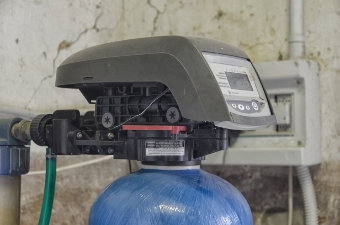Catalyst-based Non-chemical Water Treatment
Last Updated: 03/05/24
Catalyst-based non-chemical water treatment technology is inserted directly into the pipe that carries the water to be treated. The catalyst insert causes the calcium and carbon in the water to form aragonite instead of calcite, which stays suspended in the water and flushes through to the drain rather than plating on heat transfer surfaces like calcite.
 Product Details
Product Details
|
Procurement Info
|
Where to Buy
|
|---|---|
|
 Life Cycle Cost Savings
Life Cycle Cost Savings
Life Cycle Costing (LCC) aims to quantify the financial impact of a product over its entire life cycle to assist consumers in making decisions that will save them money over the long term.
GSA's Proving Ground![]() determined that the catalyst-based system tested reduced calcite buildup in pipes and commercial-grade heating elements, reducing repair and replacement costs. The systems had minimal operational costs beyond the initial installation cost, and payback was less than two years when compared to the cost of replacing failed heating elements. When compared to the cost of a conventional salt-based water treatment system, payback is immediate.
determined that the catalyst-based system tested reduced calcite buildup in pipes and commercial-grade heating elements, reducing repair and replacement costs. The systems had minimal operational costs beyond the initial installation cost, and payback was less than two years when compared to the cost of replacing failed heating elements. When compared to the cost of a conventional salt-based water treatment system, payback is immediate.
 Guiding Principles
Guiding Principles
Contributes to meeting The Guiding Principles for Sustainable Federal Buildings
 Additional Guidance
Additional Guidance
Catalyst-based water treatment systems should be considered for any facility with calcification issues. According to the Green Proving Ground, remote locations, where access to power, chemicals, and labor makes conventional water softening impractical and expensive, may benefit particularly from this technology.


 GSA's Green Proving Ground
GSA's Green Proving Ground